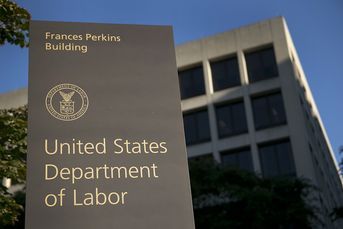Small retirement accounts, prone to cash-outs and getting lost, a growing problem

With the number of small accounts likely to rise as more states adopt auto-IRA programs, the U.S. could benefit from single-account systems, automatic portability and other reforms, Brookings found.
The number of small retirement accounts in the country is likely to grow as more states move forward with auto-IRA programs — and that could lead to more lost accounts and early cash-outs, according to a Brookings paper published Tuesday.
The growth in retirement savings initiatives is not itself the problem, but the historical behavior of savers who have small balances at plans of former employers shows that the country would benefit from several changes that would help people keep track of their accounts and discourage them from taking withdrawals before retirement.
About 16% of households that own individual retirement accounts have balances of less than $10,000, and that is the case for about 20% of 401(k) accounts, according to the Brookings paper.
“The number of small retirement accounts is likely to grow as more states (and potentially the federal government) establish automatic IRA and similar programs that mainly serve moderate-to-lower income workers,” the authors wrote. At the three state programs in operation — in California, Oregon and Illinois — average balances are less than $1,000, which is “expected not only because the programs generally began recently but particularly because they are designed to serve lower-income, first-time savers who can contribute only relatively modest amounts.”
About 40% of 401(k) owners cash out their accounts when leaving a job, and that rate is much higher among those with small balances. Eighty percent of people with less than $1,000 do so, as well as about two-thirds of people with accounts between $1,000 and $5,000, according to a separate recent report from Alight Solutions.
Among account owners who opt for rollovers when leaving an employer, the vast majority put the money into IRAs rather than a 401(k) at their new employer, the Alight report noted.
“Overall, the dollars rolled into IRAs outnumber those going into new employer plans by a factor of roughly 10-to-one,” according to the report. “Among people with balances less than $1,000 at termination, 1.7% rolled money into their new employer’s plan, and among those with balances between $1,000 and $4,999, 3.9% had a plan-to-plan rollover.”
About $50 billion in early withdrawals from DC plans and IRAs in 2015 were taken by people who were not at retirement, reflecting 15% of the total withdrawals that year, according to data cited by Brookings.
Alight projected that a single cash-out at age 23 would lead to having $23,000 less at age 67, while an additional early withdrawal at 26 of $4,500 would further erode savings at retirement by $56,000. A third such event at age 28, for an early cash-out of $5,000, would lead to a total of $91,000 less at retirement, the company stated.
POLICY RECOMMENDATIONS
To address the growing issue of early cash-outs and missing accounts that are linked with small balances, Brookings recommended several approaches. Those include: a system to consolidate accounts; allowing more time for people who have taken lump-sum distributions to make rollovers; a safe harbor for automatic IRA rollovers into target-date funds or other qualified default investments; an expanded and refundable Saver’s Credit; a national retirement dashboard to help people keep track of their accounts; and moving to a one-account-per-saver system.
“Regulations could provide that inadvertent acceptance of an improper rollover would not taint a plan’s qualified status, only the tax treatment of the transferred funds. These changes would make it reasonable to require, for the first time, that all qualified DC plans accept rollovers,” the authors stated. “Doing so would bring about a sea change in portability, serving participants’ interests by enhancing their ability to keep track of, combine and consolidate their retirement savings.”
People who take lump-sum distributions when leaving a job face a 20% tax withholding, which creates a hurdle for those who wish to roll the assets into a qualified account, as they must come up with cash equivalent to that 20% for the rollover. Extending the deadline from the current 60-day window to the next tax-return due date would give more people a chance to make those rollovers, according to Brookings.
Creating a safe harbor for target-dates and other all-in-one investments in automatic IRA rollovers would allow “balances to continue growing rather than gradually shrinking as they often do currently by paying administrative fees while invested in low-return principal protection funds.”
The Saver’s Credit, which has helped encourage lower-income people to contribute to IRAs and 401(k)s, could be structured better than the current credit rates of “10% for most eligible taxpayers, 20% for some others and 50% for a very few,” according to the paper.
“The credit is nonrefundable in the sense that it is limited to filers who have federal income tax liability,” the authors noted. “Although the refund can be directly deposited to an IRA, it is more often consumed or used to reduce debt. A better way to help low- to moderate-income workers build retirement balances would be to make the Saver’s Credit refundable and deliver it as a savings match equal to 50% of the saver’s contribution for that tax year.”
Further, some countries have used a national clearinghouse to keep records and consolidate workers’ retirement accounts, although people can opt out, the paper noted. Another approach that could help prevent accounts from being lost is by establishing a single account for each worker, according to Brookings.
PRIVATE-SECTOR APPROACH
Some record keepers are introducing “auto portability” options for clients, working with companies such as Retirement Clearinghouse to provide that.
Alight, which has signed up for that service, said it “creates a new default option for employees to provide an easy path to keep assets earmarked for retirement. This also benefits plan sponsors as auto portability will help reduce uncashed checks and missing participants while ultimately driving higher account balance averages.”
Similarly, Vanguard on Tuesday announced that it would offer that service through Retirement Clearinghouse, which is expected to become available for its clients in mid-2022.
Don’t just throw more people at the problem
Learn more about reprints and licensing for this article.








